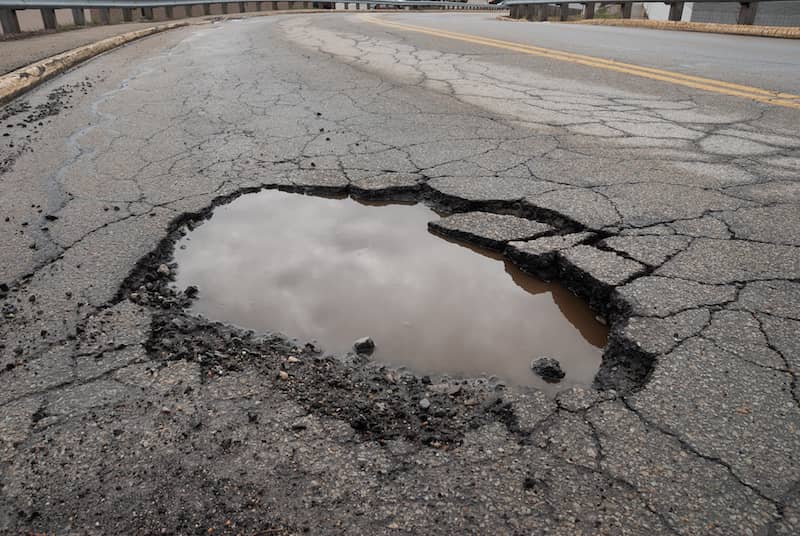Thousands of square miles of pavement cover the United States, and all of that requires perfect maintenance to ensure our great nation keeps moving. Among the most popular paving problems, particularly in asphalt, is potholes. They can damage your suspension, cause accidents, and are unappealing to look at. If you have a pothole on your pavement, you should ensure it is thoroughly repaired to avoid any future problems. What if it is cold outside? Some people may ask; the freezing and thawing cycles are among the primary causes of potholes; however, you cannot create a permanent fix in mid-December because asphalt requires warm temperatures to dry correctly. However, there is no need to worry, there are always temporary remedies. Kindly join us as we take a deep dive into two distinct methods of repairing potholes, including the distinction between permanent and temporary fixes, why there are two distinct steps, and how to ensure your repair lasts.
So, how are potholes temporarily repaired? You cannot often make a permanent repair on asphalt surfaces immediately. There are cases in which you will be required to create a temporary patch until you are well prepared for a permanent remedy. There are two main reasons why you cannot always establish a permanent fix: temperature and compaction.
Hot-mix asphalt
A specific temperature threshold is needed by the asphalt that makes up our highways for proper bonding; hot-mix asphalt that is spread into a cold environment will not bond properly. Also, an improper pour results in asphalt that chips away and damages easily; kindly, never try to apply a hot-mix repair unless the temperatures are above freezing for numerous consecutive days. On the other hand, if you have the temperatures, this is termed as skin patching, and it might need some professional help.
Regardless of the fact that hot-mix repairs could be beyond your capabilities, many homeowners can deal with temporary or cold-mix asphalt repairs. The following are three simple steps applied.
When patching a pothole with a cold-mix asphalt
- Clean the pothole with a broom to clear all loose debris such as rocks, dirt, and dust.
- With the cold-patch asphalt, fill the pothole.
- Pour the cold-mix asphalt approximately half an inch above the surface.
- Compress the asphalt with a heavy object such as a tamper to provide a level, weighted surface. Then carefully drive over the pothole with your front tires while ensuring your wheel does not turn over the freshly installed cold-patch asphalt.
- Let the patch dry. A patch can withstand regular traffic immediately; however, it is essential to wait for at least three weeks.

Unlike cold-patch repair, permanent fixes are a little more complex and usually need the expertise of paving professionals. An asphalt expert will perfectly remove the temporary patch and clean the pothole to eliminate all debris, pour a perfectly made hot-mix asphalt into the pothole and finally bind it to the ideal density. In no time, your pavement will be as good as new!
If you need to repair your pothole correctly and for the long run, Commonwealth will recommend and offer a full depth removal and replacement patch for the pavement around the pothole. Let us help you enjoy a perfectly repaired pavement; kindly contact us for a pothole repair estimate at no charges!
Address
Commonwealth Paving, 136 Outerloop, Louisville, Kentucky 40214
Phone: 502-459-7283, Fax: 502-456-2678
Opening Hours
| Monday | 9:00 AM – 5:00 PM |
| Tuesday | 9:00 AM – 5:00 PM |
| Wednesday | 9:00 AM – 5:00 PM |
| Thursday | 9:00 AM – 5:00 PM |
| Friday | 9:00 AM – 5:00 PM |
| Saturday | Closed |
| Sunday | Closed |






